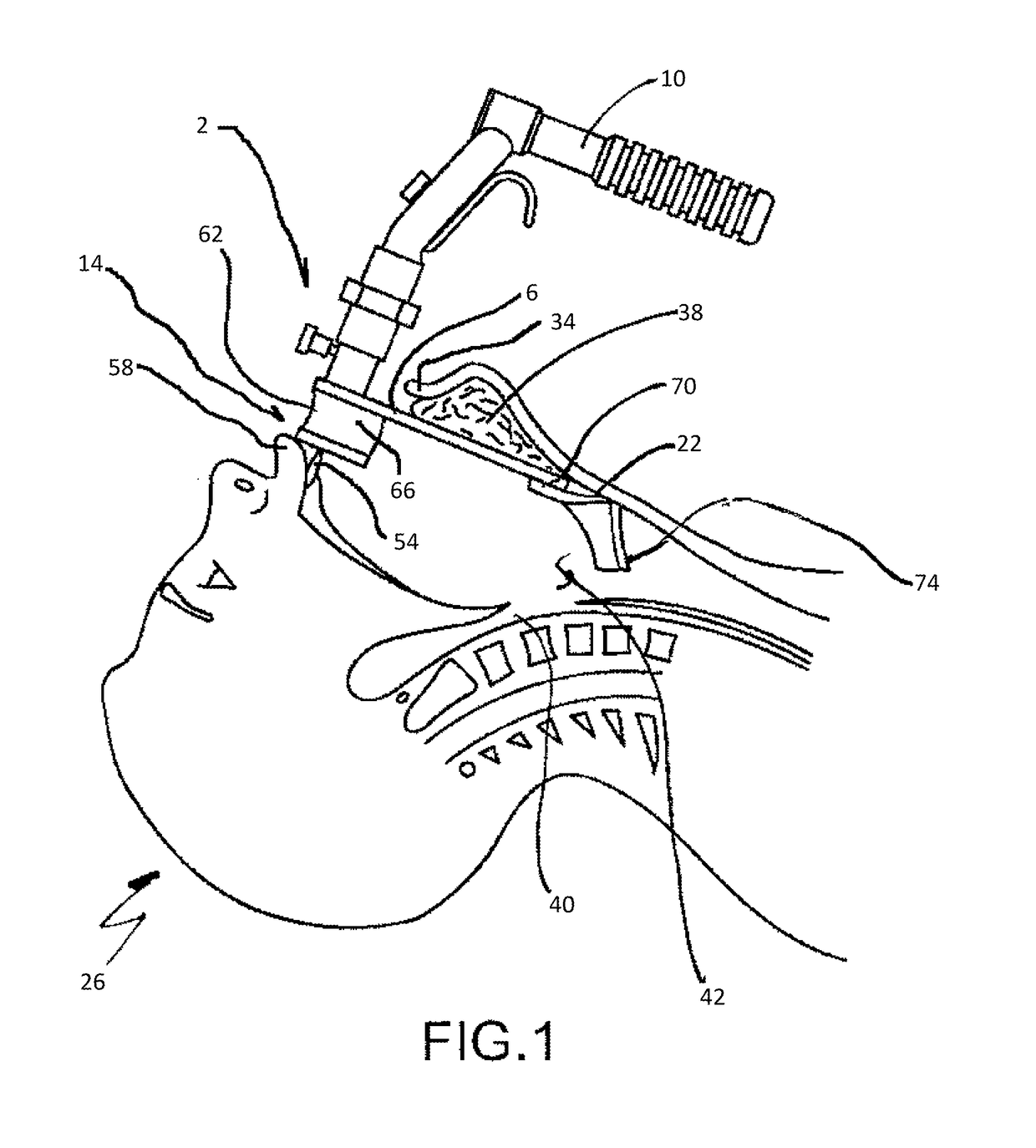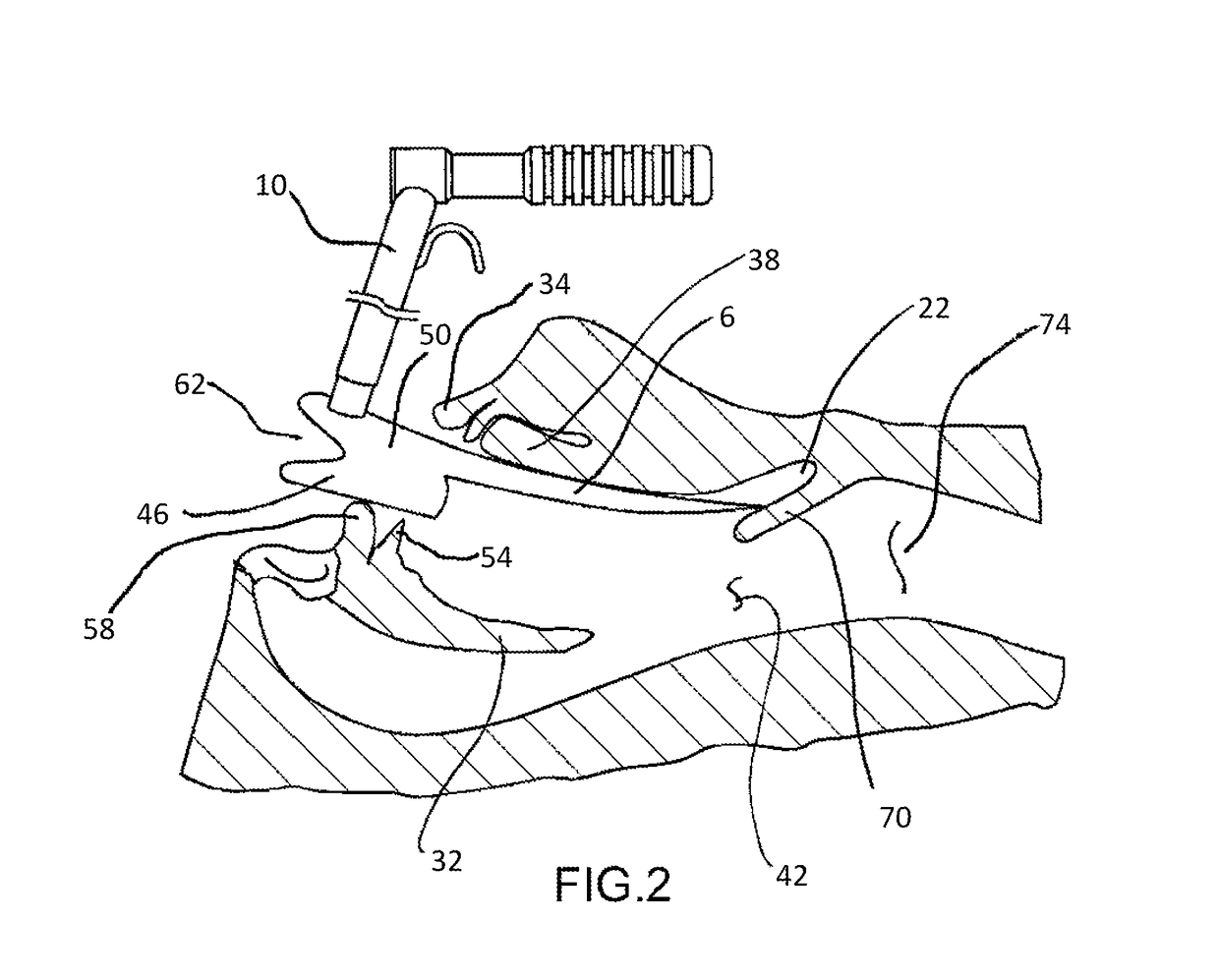Retractor and tip extender therefor
a retractor and tip technology, applied in the field of robotic access retractors, can solve the problems of ineffective endolaryngial surgery retraction, less effective use of laryngoscopes, and ineffective use of retractors, so as to enhance the degree of lift, enhance the access to patient anatomy, and enhance the effect of exposur
- Summary
- Abstract
- Description
- Claims
- Application Information
AI Technical Summary
Benefits of technology
Problems solved by technology
Method used
Image
Examples
Embodiment Construction
[0044]FIGS. 1-8 show the retractor 2 of one embodiment of the present invention that includes a blade 6 interconnected to a handle 10 which selectively interfaces with a gallows support. The blade is configured to be placed in a patient's mouth 14, wherein a blade tip 18 is placed into the patient's valleculla 22. Because the patient 26 is lying on their back, the blade 6 serves to prevent the tongue 34, lower lip 36 and tissue of the pharynx 40 and larynx 42 from blocking the oral cavity. The blade 6 is curved about its longitudinal axis (A) to provide a semi-cylindrical profile that generally contours the patient's physiology. The blade contour also serves to raise the blade tip 18 so it can better interface with the valleculla 22. The blade 6 is also curved at the tip at an angle (Θ) relative to the longitudinal axis of the retractor. The retractor includes a maxilla portion 46 and mandibular portion 50 configured to maintain a patient's mouth open by interfacing with their teeth...
PUM
 Login to View More
Login to View More Abstract
Description
Claims
Application Information
 Login to View More
Login to View More - R&D
- Intellectual Property
- Life Sciences
- Materials
- Tech Scout
- Unparalleled Data Quality
- Higher Quality Content
- 60% Fewer Hallucinations
Browse by: Latest US Patents, China's latest patents, Technical Efficacy Thesaurus, Application Domain, Technology Topic, Popular Technical Reports.
© 2025 PatSnap. All rights reserved.Legal|Privacy policy|Modern Slavery Act Transparency Statement|Sitemap|About US| Contact US: help@patsnap.com



